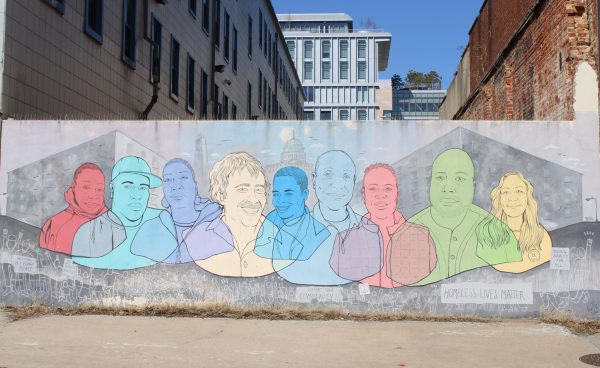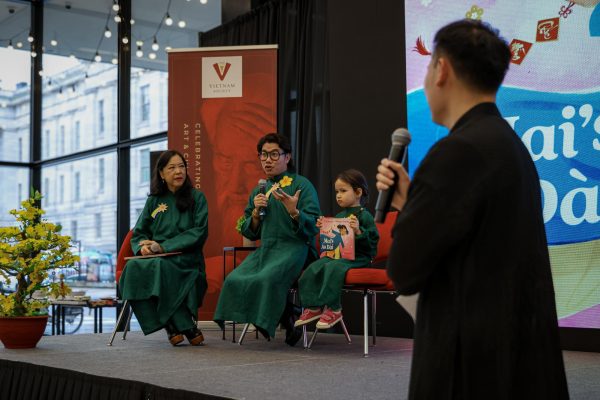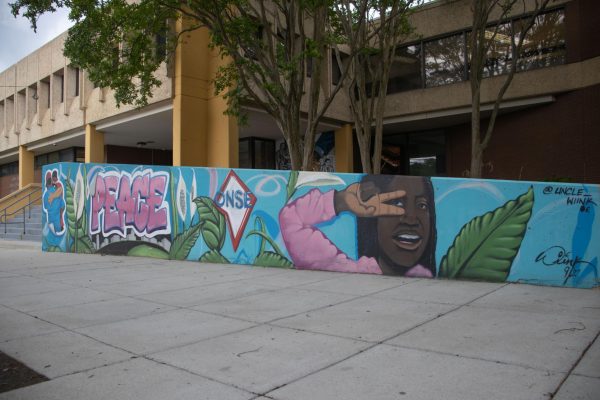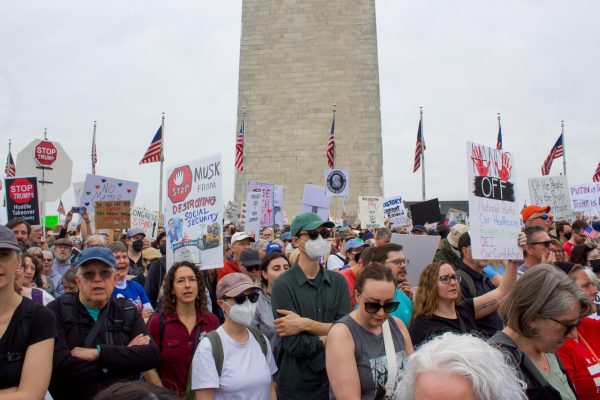Life After Torture
When we think of torture survivors, we usually don’t think of the people we pass on the street, going about their lives and living in our communities, but there are 50,000 in the DC region alone according to the Torture Abolition and Survivor Support Coalition.
One of those survivors is Selam Heran Tarik. She lives in Shady Grove, Maryland and asked that her real name not be used in this story. Tarik says she was a minor organizer for a political opposition party back home in Ethiopia and was tortured by the ruling government for her political participation. She was forced to leave her adolescent son behind when she fled in 2005.
Tarik petitioned for asylum in the United States, but lost. Without a green card or a work visa, she could not work and didn’t have the savings to live on her own. She says she lived with different friends from church for a few days or weeks at a time, eating off of the charity of others and occasionally supplementing her funds with money from temporary, undocumented housework.
“Normally no food, nothing, nothing, nothing,” her translator and friend, explained.
After Tarik lost her first case, TASSC helped her build a second. In late 2012, she was called to the immigration office in Baltimore. She remembers her lawyer not being allowed in the room when the officers put her into custody for one night before releasing her with an ankle monitor and directives to check in at the Baltimore office once a week.
The immigration officers required her to have a permanent address, so a friend from church let her live with him for what he thought would be a week or two. She says she’s been there for four months now and hasn’t heard anything about her case.
Tarik says her church community is helping her rehabilitate, keeping her connected to her Ethiopian culture and providing isles of friendship in a sea of isolation. It takes Selam four buses to travel from Shady Grove to her church and the TASSC center though, and since money is scarce she can’t always go, making her feel isolated. Increasing her isolation is Tarik’s longing for her son, but she cannot bring him to the US unless she gets a green card.
“I prefer to live here. Foreigners want to go abroad to improve life,” she said. Selam says that she is grateful for TASSC’s help in providing her with psychological and legal support. While her immigration status saddens her, she says TASSC has helped her recover from the pain inflicted by torture.
How to Break a Soul
No one knows for sure just how many survivors live across the globe. Estimates range from two to fifteen million based on refugee statistics. There are approximately 500,000 survivors in the U.S. alone according to TASSC. The survivors generally aggregate in the major metropolitan areas, where the nation’s nearly 40 torture treatment centers can be found. Most survivors are refugees, exiles, or asylum-seekers.
Manfred Nowak, the former UN Special Rapporteur on Torture and Other Cruel, Inhuman and Degrading Treatment or Punishment, estimates that torture currently takes place in as many as 90 percent of countries, with over half experiencing persistent patterns of torture rather than isolated, random cases.
The majority of torture occurs in detention facilities, hidden away from public eye. Torture methods vary but torturers are increasingly try to minimize physical evidence, combining healable physical abuses with psychological torment.
According to TASSC, common forms of physical torture include beating, electric shocks, starvation, dehydration, asphyxiation, positional tortures, sexual assault, and rape. While these physical acts have psychological effects, the group says there are other methods aimed at specifically damaging the mind such as sleep deprivation, threats, mock executions, hooding, humiliation, sexual shaming, waterboarding, solitary confinement, and witnessing the torture of others.
Torture is not ephemeral – it stays with victims throughout their lives as not simply a memory, but also a reality. Juan Mendez, the current UN Special Rapporteur on Torture, a visiting professor at AU and torture survivor from Argentina says despite commonalities, each survivor’s experience is unique.
“The universe of survivors is very complex,” Mendez said. “It depends on each person’s history, the history of the nation that they come from, and also how well they can adjust to changing situations. It’s difficult to generalize on that, but as an initial or at least in the near term, it is common to all, that they will have this fear and this distrust of authority.”
Mendez says that this distrust of authority stems from the fact that “torture is the ultimate exercise of authority; it’s a way of exercising authority over a person so absolute that you can actually dispose of a life of that person.”
Aside from distrust of authority, there are many other lasting effects of torture. TASSC says these include “flashbacks, chronic anxiety, depression, feelings of betrayal, survivor’s guilt, [and] fear of people in uniform.”
Rehabilitation aims to help survivors cope with these realities. “Some people just need to know that their life can have meaning again,” Mendez said. But not everyone chooses treatment.
“They may say ‘One time of victimization is enough for me, I don’t want to relive this all again,’ so they don’t participate,” he said.
An important step in rehabilitation after torture is finding purpose again according to Dr. Mary Fabri, who used to work at the Marjorie Kovler Center for torture survivors in Illinois. She says rehabilitation comes from “experiencing yourself in a dignified way again.”
Community attitudes also shape rehabilitation. “Torture breaks the connection with self, breaks the connection with family, breaks the connection with community,” Fabri said. Alternatively, when a community is supportive of its refugee populations, the survivor feels safe. Fabri believes a connection comes from that safety, helping to mend what torture severed.
The US View on Torture
“Your friend is an animal. Please—help me. Please,” pleads Omar, a torture victim in the controversial movie “Zero Dark Thirty,” a film that follows the hunt for Osama Bin Laden. Omar’s interrogator has just left him alone with Maya, a pretty, young, woman new to the squadron. Maya pauses and then coolly replies, “You can help yourself by being truthful.”
Kathryn Bigelow’s film views torture through the perspective of the torturers, allowing viewers to understand how torture might affect a perpetrator like Maya as she experiences a weakening of morality, a hardening of demeanor, and a struggle with conscience. What Bigelow does not portray is torture’s long-term effects on its victims.
Bigelow aimed to show a realistic account of history in “Zero Dark Thirty,” but Mendez says she failed when it came to portraying torture.
“First, the torture sequences that a lot of people find painful and offensive – let me tell you, they are bland… you don’t see anything of how real the pain is at the
time of the suffering; and presenting the torturer as somebody who is reluctant to do it and kind of suffers when they have to do it is also completely unrealistic,” Mendez said.
“Zero Dark Thirty” brought back a national discussion focused on the effectiveness of torture rather than its morality, legality or consequences.
Mendez believes the public—partially because of Bigelow’s movie—thinks, “‘We’re safer because we torture, so let’s not criticize it.’” He doesn’t think torture is necessary to obtain information, pointing to the Italian government’s success in ending the terrorist threat of the Red Brigades in the 1980s without torture by offering detainees protection in exchange for information.
Debating torture’s effectiveness is dangerous according to Dr. Linda Piwowarczyk, a co-founder and psychiatrist of the Boston Center for Refugee Health and Human Rights.
“An end-justifies-the-means argument […] becomes very abstract,” she said, implying that when people begin to generalize torture, they reduce and objectify torture survivors. “The survivor voice is so wholly absent in this whole discussion,” Piwowarcyck explained.
The public’s ignorance of these survivors prompted the creation of “Beneath the Blindfold,” a documentary that captures survivors’ stories.
One of those survivors is Donald Vance, a US citizen, navy veteran who was working in Iraq as a contractor in 2006. When he reported corruption and misappropriation of weapons by the military to the FBI, the military detained and tortured Vance for three months as an enemy combatant. “It’s this stain on you, being accused of being a terrorist. This should not happen to anyone,” Vance said in “Behind the Blindfold.”
While the film began to take shape following the Abu Ghraib scandal of 2004, its 2012 release date situates it as a response to Bigelow’s “Zero Dark Thirty.” One movie validates torture as a necessary evil; the other reveals the consequences of this viewpoint.
One consequence is that torture survivors face a lifetime of rehabilitation. Movies and media portray torture in purely physical terms, showing the agonizing pain. But survivors also carry the psychological burden of their experience.
Mendez believes that American citizens need to educate themselves on the statuses of refugees like Tarik living in their communities, as well as America’s policy towards practicing torture and rehabilitating survivors.
“It is very difficult now for the United States to be a beacon of hope for other people, and to play an important role in promoting human rights practices in other parts of the world, when a lot of countries will say, ‘What about you?’” Mendez explained. He says citizens need to urge their congressmen to “get back to the moral high ground on torture that [the US] used to have until 2001.”
Obama’s prohibition on the US using torture is a step in the right direction; since the decree, Mendez has not received a complaint of torture against the US. Even so, survivors still face a grueling struggle each day to live and to recover, and we need to honor them with our support.
Infographics by Christopher Sledge











